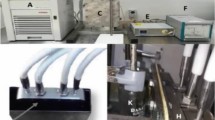Abstracts
A novel degumming process is described that is applicable to both undegummed and water-degummed oils. Such totally degummed oils have residual iron contents below 0.2 ppm Fe and residual phosphorus contents that average below 5 ppm P. Therefore, they can be physically refined to yield a stable refined oil while using the same level of bleaching earth commonly used for alkali refined oils prior to deodorization. They can also be alkali refined with reduced oil loss to yield a soapstock that only requires slight acidification for fatty acid recovery, and thus avoids the strongly polluting soap splitting process. The total degumming process involes dispersing a non-toxic acid such as phosphoric acid or citric acid into the oil, allowing a contact time, and then mixing a base such as caustic soda or sodium silicate into the acid-in-oil emulsion. This keeps the degree of neutralization low enough to avoid forming soaps, because that would lead to increased oil loss. Subsequently, the oil is passed to a centrifugal separator where most of the gums are removed from the oil stream to yield a gum phase with minimal oil content. The oil stream is then passed to a second centrifugal separator to remove all remaining gums to yield a dilute gum phase which is recycled.
Washing and drying or in-line alkali refining complete the process. After the adoption of the total degumming process, in comparison with the classical alkali refining process, an overall yield improvement of approximately 0.5% has been realized. It did not matter whether the totally degummed oil was subsequently alkali refined, bleached and deodorized, or bleached and physically refined.
Similar content being viewed by others
References
Guillaumin, R., and N. Drouhin,Rev. Fr. Corps Gras 10:671 (1963).
Kock, M.,Proceedings of the Second A.S.A. Symposium on Soy- bean Processing, American Soybean Association (1981).
Smouse, T.H.,J. Am. Oil Chem. Soc. 56:747A (1979).
Grothues, B.,Proceedings of the Second A.S.A. Symposium on Soybean Processing, American Soybean Association (1981).
Hvolby, A.,J. Am. Oil Chem. Soc. 48:503 (1971).
Dijkstra, A.J., and M. Van Opstal, US Patent 4,698,185 (1987).
Van Opstal, M., F. Dewulf, B. Cleenewerck, and E. Weber, Euro- pean Patent Application 88 110751.0 (1988).
Dijkstra, A.J., and D. Meert,J. Am. Oil Chem. Soc. 59:199 (1982).
Snyder, J.M., E.N. Frankel, E. Selke and K. Warner,Ibid.J. Am. Oil Chem. Soc. 65:1617 (1988).
Nilsson-Johansson, L., U. Brimberg and G. Haraldsson,Fat Sci. Technol. 90:447 (1988).
Paul, W.,Die Nahrung 2:429 (1968).
Merat, P.,Rev. Fr. Corps Gras 2:615 (1955).
Ohlson, R., and C. Svensson,J. Am. Oil Chem. Soc. 53:8 (1976).
Alexander, D.G., British Patent 1 565 569 (1980).
Leibovitz, Z., and C. Ruckenstein,Rev. Fr. Corps Gras 28:303 (1981).
Mag, T.K., and M.P. Reid U.K. Patent Application 2 038 863 A (1980).
Segers, J.C.,Fette, Seifen Anstrichm. 84:543 (1982).
Dijkstra, A.J., to be published.
Author information
Authors and Affiliations
About this article
Cite this article
Dijkstra, A.J., Van Opstal, M. The total degumming process. J Am Oil Chem Soc 66, 1002–1009 (1989). https://doi.org/10.1007/BF02682627
Received:
Accepted:
Issue Date:
DOI: https://doi.org/10.1007/BF02682627




